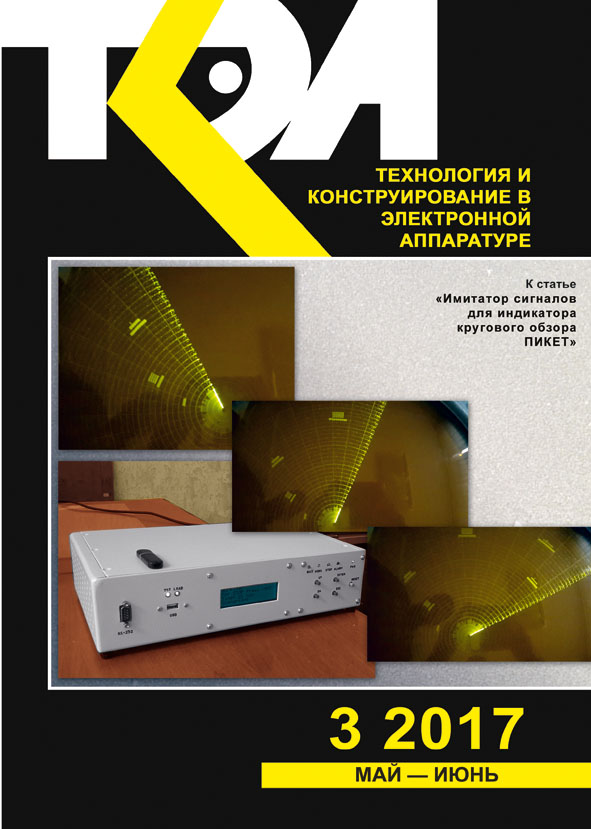Adaptive electrothermal protection means for semiconductor converters.
Abstract
Thermal management for power converters during normal operation and transient modes when electrical components are warmed up is an actual problem. This can be particularly important for converters with intermittent duty operation, e.g. power supplies for resistance welding. According to some research, nearly 60% of failures are temperature-induced, and for every 10°C temperature rise in operating environment the failure rate nearly doubles.
In this paper, thermal motion of state equations eigenvalue is analysed. It is shown, that in semiconductor converters with an output smoothing filter it is appropriate to use thermal protection devices based on thermal normalisation of the converter filter and, while for cases when short circuits are possible it is appropriate to use a soft start system with thermal adaptation for soft start time factor.
Based on these results, two systems of thermal protections operating for semiconductor power converters are introduced. Simulation of combined electromagnetic and thermal processes in buck converter operating with both thermal management systems in overlapping environments MATLAB/Simulink and PLECS showed the possibility to significantly reduce thermal shock on semiconductor components. Using the system of filter parameters normalisation decreases the temperature of the crystal from 210°C to 85°C, using the adaptive soft start system decreases the temperature from 180°C to 80°C. The simulation results are confirmed by tests on real devices.
References
Fabis P.M, Shun D., Windischmann H. Thermal modelling of diamond-based power electronics package. Proc. 15th Annu. IEEE Semicond. Therm. Meas. Manage. Symp., 1999, рр. 98-104.
Divins D. Using Simulation to Estimate MOSFET junction temperature in a circuit application. International Rectifier, Power Electronics Technology Exhibition & Conference, Dallas, Texas, 2007.
Malyna D. Accelerated synthesis of electrically and thermally constrained power electronic converter systems. Eindhoven, Eindhoven University Press., 2007, 229 р.
Drofenik U. A., Kolar J. W. А general scheme for calculating switching-and conduction-losses of power semiconductors in numerical circuit simulations of power electronic systems. International Power Electronics Conference (IPEC’05), 2005, рр. 4-8.
Drofenik U., Cotet D., Musing A., Meyer J. M., Kolar J. W. Computationally encient integration of complex thermal multi-chip power module models into circuit simulators. Power Conversion Conference, 2007, Nagoya, рр. 550-557. http://dx.doi.org/10.1109/pccon.2007.373020
Merrikh A. A. Compact thermal modeling methodology for predicting skin temperature of passively cooled devices. Applied Thermal Engineering, vol. 85, 2015, pp. 287-296.
То nkal’ V.T., Rudenko V.S., Zhuikov V.Ya. et al. Ventil’nye preobrazovateli peremennoi struktury [Variable-type gate converters]. Kyiv, Naukova dumka, 1989, 336 р. (Rus)
Stzheletski R., Koroteev I.E., Zhuikov V.Ya. Khaoticheskie protsessy v sistemakh silovoi elektroniki [Chaotic processes in power electronics systems]. Kyiv, Аvers, 2001. (Rus)
Kron G. Diakoptics, the piecewise solution of large scale systems. London, MacDonald & Co, 1963.
Soft Ferrites. Data Handbook MA01, Philips Components. Netherlands, Philips Electronics, 1996, 887p.
Filaretov V.V. [Sigorsky’s theorem on the determinant of the sum of matrices and diacoptics]. Electronics and Communications, 2010, no. 2, pp. 5-13. (Rus)
Golub D., Van Loun Ch. Matrichnyye vychisleniya [Matrix computing]. Moscow. Mir, 1999, 458 p. (Rus)
Simulation software PLECS. Plexim GmbH. [Online]. http://www.plexim.com.
Register A. A. Guide to MATLAB object-oriented programming. Florida: SciTech Publishing Inc., 2007, p. 354.
Copyright (c) 2017 Baraniuk R. A., Todorenko V. A., Bondarenko O. F.

This work is licensed under a Creative Commons Attribution 4.0 International License.

